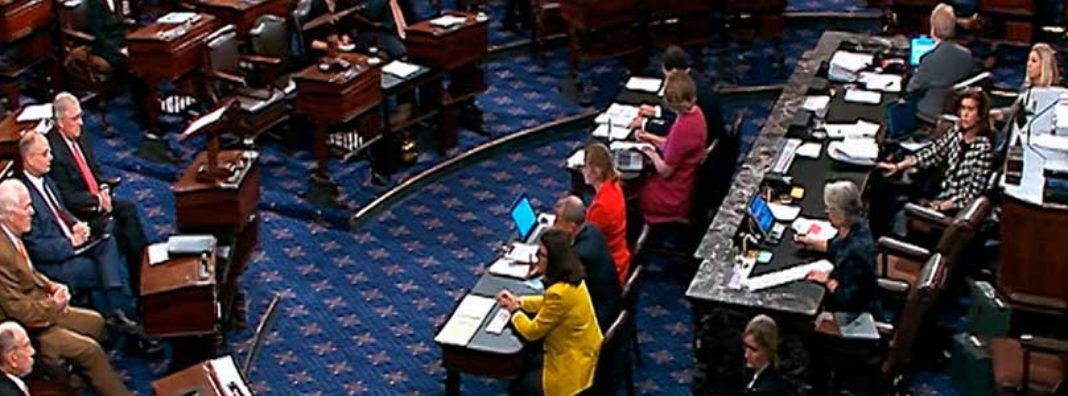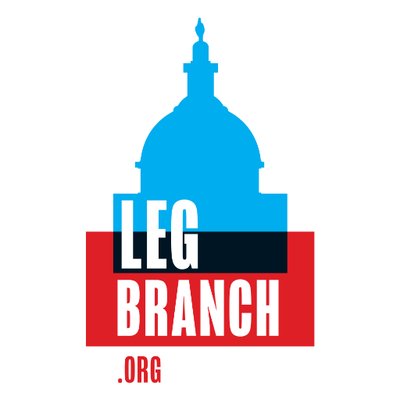
AP Photo/Senate TV
In classrooms across the country, economics professors often use the phrase “guns and butter” as an analogy for the competing priorities nations face when deciding how to allocate resources. Historically, Republicans have tended to prefer spending on defense, i.e. “guns,” whereas Democrats have shown a preference for the “butter” of domestic social safety net programs. However, this analogy misses an important point: these decisions are not made by monolithic nations but rather by individuals in the private sector and by elected officials acting collectively through the political process. It turns out that, once politics is taken into account, the more apt analogy may just be “principles vs. pork.”
As evidenced casually by the cable news wars and more rigorously through surveys by the Pew Research Center, American politics has been trending strongly toward greater ideological polarization. For example, back in 1994, 36% of Republicans were to the political left of the median Democrat, and 30% of Democrats were to the right of the median Republican. Nowadays, liberal Republicans and conservative Democrats are almost nonexistent, with these measures of overlap falling to 8% and 6%, respectively.
The widening ideological chasm has also manifested itself in the chambers of Congress and in state houses throughout the country. To some observers, these trends mark a lamentable reduction in the scope for bipartisan cooperation. After all, the number of bills successfully passed by the U.S. Senate each year has fallen by more than half since 1970, with a particularly notable drop occurring over the past decade. Others, however, celebrate this reduction in legislative “productivity” as a welcome shift away from unseemly vote trading toward greater ideological consistency and adherence to principles.
Regardless of one’s evaluation of these trends, they take place amidst another large shift in the political landscape: the decline of earmarks. Once a staple of American politics, earmarks were a favored tool of politicians seeking to localize their races by promising to “bring home the bacon.” However, following a one-year moratorium in 2007 and a subsequent all-out ban in 2011 (which remains in effect), earmarks have fallen from nearly $30 billion and 14,000 projects a year in the mid-2000s to almost nothing today, according to Citizens Against Government Waste (CAGW). There are reasons beyond contemporaneous timing to believe that that these twin trends of fewer earmarks and greater congressional polarization are closely related.
To see the connection, suppose that voters care about two criteria when choosing their representatives: ideological compatibility and their ability to “bring home the bacon.” Historically, elected officials closer to the ideological middle of the legislative body are more successful at securing pork barrel spending. Thus, when evaluating candidates, voters who want their representatives to “bring home the bacon” should to some extent take into account where each of them would fall along the ideological spectrum of Congress. Even if voters in a particular district are ideologically extreme relative to the national average, they risk forfeiting money for local projects unless they temper their views in the voting booth. Over time, this moderating force can become self-reinforcing by shifting political gravity toward the center and putting even more pressure on the extremes. By contrast, an earmark ban shuts down this moderating channel and gives people more leeway to vote their ideological conscience, regardless of how out-of-step it may be from a national perspective.
Whether one views polarization as dangerous and conflict-inducing or a sanguine reflection of greater adherence to principle, it is clear that pork barrel spending dilutes the role of ideology in politics. By encouraging politicians—and, therefore, the voters who choose them—to minimize the distance between themselves and the congressional middle, earmarks pave the way for greater legislative cooperation and output. Time will tell if voters view such an outcome as a feature or a bug of the old way of doing business and, in turn, whether the earmark ban persists or is someday brought to an end.


 LegBranch.org
LegBranch.org